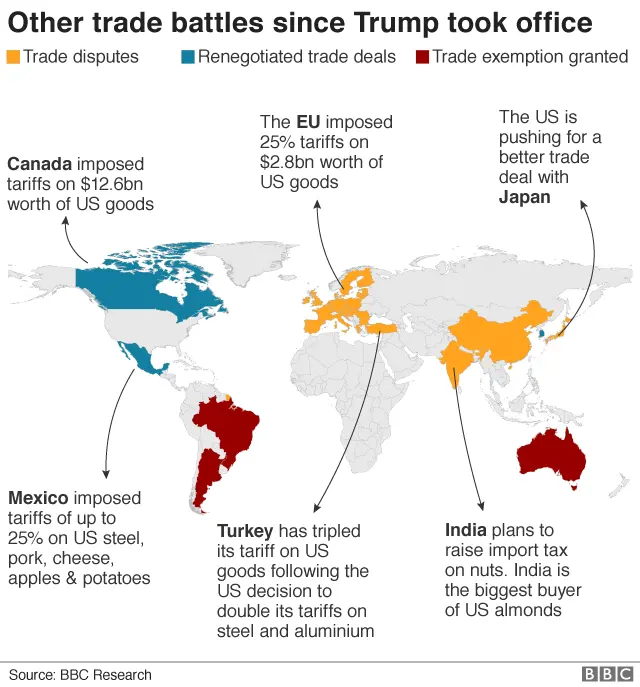In a significant move that has sent ripples through the global markets, President Donald Trump announced a doubling of steel tariffs to 50%. This decision has raised alarms, particularly in the European Union (EU), which is now poised to implement countermeasures in retaliation. The announcement of the increased tariffs, originally aimed at protecting the U.S. steel industry, poses considerable risks to international trade relations, jeopardizing existing agreements and potentially leading to a full-blown trade war.
The essence of the tariffs, framed by the Trump administration as crucial for national security and the preservation of American jobs in the steel sector, has been met with skepticism and concern from international partners. Critics argue that such measures disproportionately impact allied countries that export steel to the U.S., including members of the EU. As a result, these countries feel compelled to respond, not only to protect their own steel industries but also to maintain the principles of fair trade.
Following Trump’s announcement, the European Commission expressed its deep disappointment and concern regarding the implications of the increased tariffs. European officials have underscored the potential negative impact on transatlantic economic relations, emphasizing that a trade war could have severe consequences not just for the U.S. and EU economies, but for the global economy as well.
In a bid to counterbalance the tariffs, the EU has been rapidly working on a list of goods that could be targeted for retaliatory tariffs. This list includes a variety of consumer products, which may affect important U.S. industries. This retaliatory strategy aims to demonstrate the EU’s resilience and commitment to protecting its economic interests. The European Union has previously implemented similar countermeasures in response to U.S. tariffs under the previous administration, suggesting that it is prepared to take swift and measured actions against what it perceives as unjust trade practices.
Furthermore, EU trade officials have stated that they are committed to seeking resolution through diplomatic means, hoping to engage in discussions with their U.S. counterparts to address the underlying issues surrounding trade imbalances. The EU plans to advocate for a more equitable trading system, calling for a return to dialogue in the hope of finding common ground before the situation escalates further.
The immediate impact of the tariffs has raised concerns among global business leaders and economists about rising costs in the steel supply chain, which could lead to increased prices for consumers and businesses alike. Companies that rely heavily on steel for their products, such as automakers and construction firms, may find themselves facing higher production costs. The ripple effects of the tariff hikes may extend beyond the steel industry, potentially affecting various sectors connected to manufacturing and exports.
In light of these developments, global markets are observing the situation closely. The potential for increased tariffs and trade barriers raises questions about the future of international trade partnerships. Many stakeholders in the EU are urging for proactive engagement rather than reactive measures, emphasizing the importance of maintaining long-standing trade relationships and ensuring continuity in cooperative efforts.
The backdrop of these unfolding events is the context of an already complex trade landscape, exacerbated by ongoing economic uncertainties stemming from the global pandemic and geopolitical tensions. Analysts warn that heightened tariffs could destabilize markets that are just beginning to recover from previous disruptions. The interconnected nature of global commerce means that decisions made in one country can have far-reaching effects elsewhere.
As the EU prepares its countermeasures, it remains imperative for both sides to consider the long-term repercussions of their actions. While tariffs may offer short-term relief for certain sectors, they may ultimately lead to broader economic challenges that could offset those perceived benefits. The importance of carefully assessing each step in this process cannot be overstated, given the multifaceted implications for industries and workers across both the U.S. and the EU.
In conclusion, as the European Union gears up for potential countermeasures in response to President Trump’s decision to double steel tariffs to 50%, the focus will be on diplomacy, protectionism, and the ever-elusive balance between national interests and global cooperation. Trade relations between the U.S. and the EU, already strained, are at a critical juncture, and the path forward will require careful consideration and negotiation to avert an escalating trade conflict that could have dire consequences worldwide.



